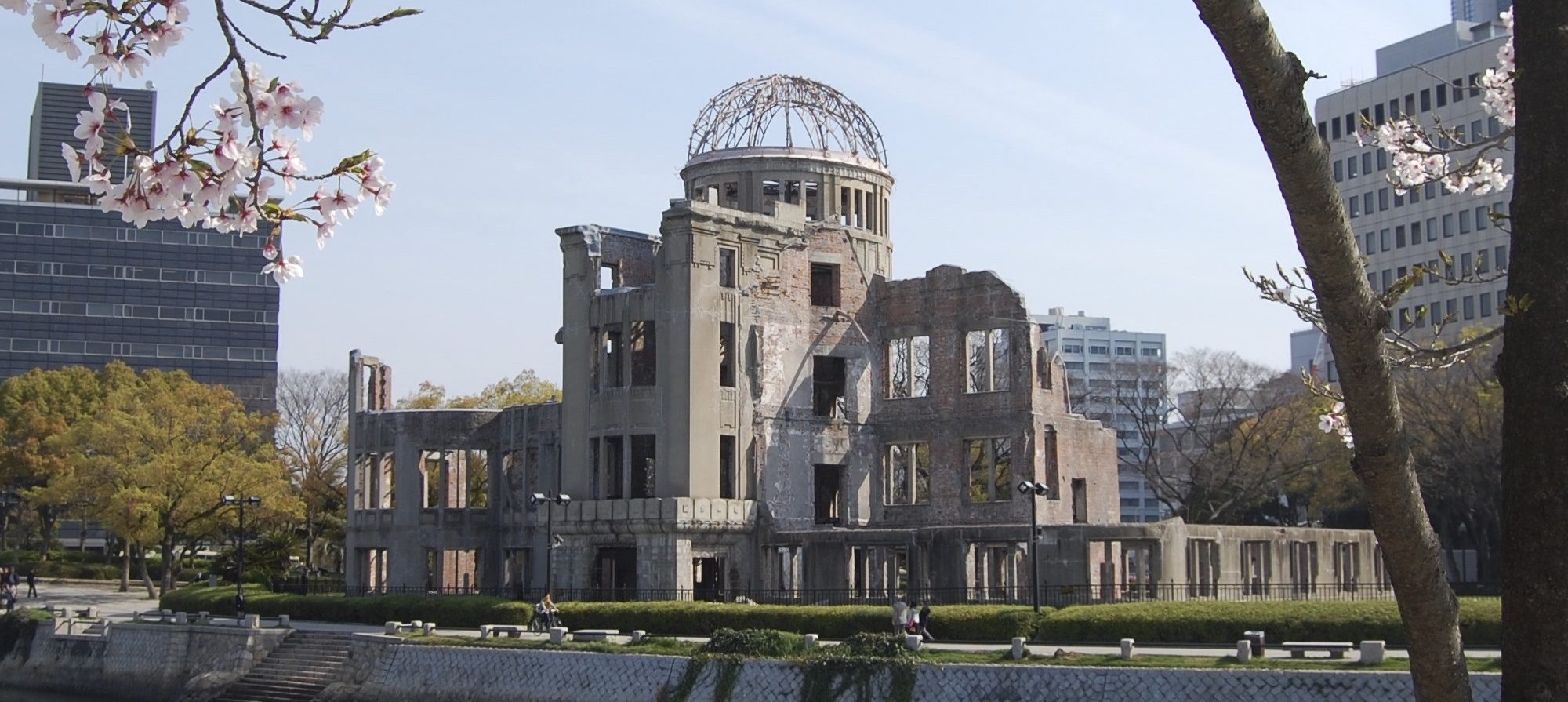〇〇 Tourism in Hiroshima: Peace, Dark, Contents, Heritage
Video Lecture 1 (14 mins): Tourism and the Representation of History
Hiroshima Prefecture Self-guided Virtual Tour (20-30 mins)
Please take a virtual tour around Hiroshima prefecture (see a map and basic data here) by looking at the tourism websites. You will not be able to spend much time at each site, but please spend 20 minutes familiarising yourself with the geography and site types on offer in Hiroshima.
Hiroshima Prefecture: These are the prefectural level tourism promotion sites in Japanese: 広島県公式観光サイト and in English: Visit Hiroshima
Hiroshima City: History related to the A-bomb is presented using the term Peace Tourism. The principle site, of course, is the Peace Park and Hiroshima Peace Memorial Museum. An article about the recent renovations has been written by Jeff Kingston (Renewing and Reframing Hiroshima).
However, let’s contrast Hiroshima city with three other places with important war history.
Kure City and Etajima City: Here is the tourism page for nearby Kure city (about 30 minutes by train from Hiroshima). They have a pamphlet in English. Here the focus is on naval history. The key sites include the Yamato Museum (Japanese here, English here) and the JMSDF Kure Museum (English page). As you can see, Kure is a naval town, and there is also the Etajima First Service School (Naval Academy) in Etajima City (city tourism page in Japanese), a short boat ride away across the harbour. You can take a guided tour around this facility, which includes the Naval History Museum. I have written about my fieldwork here in the paper “Islands of Dark and Light/Lite Tourism”.
This Hiroshima City tourism site shows how Kure, Etajima and Hiroshima may be combined in a 2-day tour on the theme of war history.
Extra Reading: To learn more about what the SDF does, see the serious versions in Defense White Papers or the Manga Versions!
Takehara City and Okunoshima (Rabbit Island): Here is the tourism page for Takehara city, which contains the island Okunoshima, known colloquially as “rabbit island”. However, scroll down the English page and you will see a reference to the island’s darker history as a site of poison gas production. This history is preserved in the Okunoshina Poison Gas Museum (Japanese only). Again, see my article “Islands of Dark and Light/Lite Tourism” for more information.
Fukuyama City: This city (tourism website here, translations via Google translate) is the least well known site of war history, but is important as the site of a major air raid. There is a historical walking course around Fukuyama Castle that takes in the prefectural history museum (mainly Seto Inland Sea culture), the Peace and Human Rights Museum, and the Fukuyama Literary Museum. The Peace and Human Rights Museum documents the Fukuyama air raid and the history of discrimination against burakumin people in the area. The Fukuyama Museum of Literature focuses heavily on perhaps Fukuyama’s most famous son: Ibuse Masuji, author of the novel Black Rain about the Hiroshima bombing.
Video Lecture 2 (24 mins): Sites of Memory in Hiroshima Prefecture
Final Zoom Session (30 minutes)
Looking forward to hearing your questions on Zoom. We will have a 30-minute Q&A session and Wrap up.
Reading List
For more reading on related topics, see the open access article series in Japan Review, “War, Tourism, and Modern Japan” (2019)
Other Video Materials
Trailer for Black Rain (1989)
Trailer for Yamato (2005)
Trailer for In this Corner of the World (2016)
Trailer for Kantai Collection (2016)
A Vlog about Rabbit Island which mentions (briefly!) the Poison Gas Factory. Alas, the bunnies are not connected to the facility …

